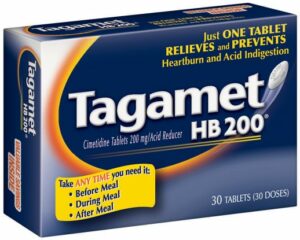Abstract:
A 5a-reductase inhibitor, finasteride, was administered orally at 0.5 mg/day, alone or in combination with topical 2% minoxidil, for 20 weeks to determine the effects on scalp hair growth in balding adult male stumptail macaque monkeys. A 7-day dose-finding study showed that both 0.5-and 2.0-mg doses of the drug produced a similar diminution in serum dihydrotestosterone (DHT) in male stumptails. Hair growth was evaluated by shaving and weighing scalp hair at baseline and at 4-week intervals during treatment to obtain cumulative hair weight (sum of the 4-week changes in hair weight from baseline) for the 20-week study. The activity of the 5a-reductase enzyme was assessed by RIA of serum testosterone (T) and DHT at 4-week intervals. The combination of finasteride and minoxidil generated significant augmentation of hair weight (additive effect) compared to either drug alone. Finasteride increased hair weight in four of five monkeys. When the data of the one nonresponsive monkey were excluded, finasteride elicited a significant elevation in hair weight compared to vehicle alone. Serum T was unchanged, whereas serum DHT was significantly depressed in monkeys that either finasteride or the combination of finasteride and minoxidil. These data suggest that inhibition of the conversion of T to DHT by this 5a-reductase inhibitor reverses the balding process and enhances hair growth by topical minoxidil in the male balding stumptail macaque. (J Clin Endocrinol Metab 74: 345-350, 1992).
Discussion:
The endocrine data of both the dose-finding and hair growth studies demonstrated that systemic inhibition of the 5a-reductase enzyme by daily oral administration of finasteride caused a rapid and prolonged reduction of serum DHT in the male stumptail. Similar findings have been generated in clinical trials, where serum DHT was depressed after 24 H, 14 days or 6 months of treatment with finasteride. A significant increase in DHT was evident in stumptails that were treated with vehicle. Although an explanation for the vehicle-associated rise in DHT is lacking, this finding tends to magnify the reduction in DHT by finasteride. In the dose-finding study, serum T was significantly elevated by both dose of finasteride, but was unchanged in the hair growth study. In a 14-day clinical trial, oral administration of 1 mg finasteride also caused a slight increase in serum T through day 8, followed by a return to baseline by day 1. However, other long term clinical studies with finasteride have not shown effects on serum T. Although biopsies were not obtained for measurement of DHT in the current study, finasteride probably caused inhibition of the 5a-reductase enzyme in the prostate and skin. This is supported by the fact that oral finasteride evokes marked suppression of both serum and prostate tissue DHT levels in man. Similarly, chroni-topical application of another azasteroid, 4-MA, reduced 5a-reductase activity in scalp tissue of juvenile stumptail macaques.
The results of the present investigation suggests that finasteride stimulated hair growth in the stumptail to the level induced by minoxidil alone. However, this effect of finasteride was evident only when the hair weight data of one nonresponder monkey were deleted. The lack of a response by this animal was apparently not attributable to aberrant androgen levels, since the diminution of serum DHT was consistent with that of the other four animals in the group. These data imply that suppression of DHT reverses established baldness and prevents the androgenetic alopecia previously observed in this animal model.
Although anecdotal reports infer that castration or chemical antiandrogens stimulate modest hair growth in balding men, these are not convincing, because of subjective data and the lack of controls. The reversal of male pattern baldness by antiandrogens ( i.e. androgen receptor blockers) has not been pursued, because of feminizing effects and interference with sexual function. Since the 5a-reductase inhibitor finasteride has not elicited sexual side effects in human males, this antiandrogen is a promising therapy for the treatment of male pattern baldness. In the current investigation, finasteride was administered orally to insure delivery and replicate the depression of serum DHT that was reported in clinical trials.
It would be prudent to develop a topical formulation to target the drug to the skin, thereby lowering DHT in the hair follicle without systemic alteration of androgens.
One of the most intriguing findings in the present study was the additive effect on hair weight of the combination of finasteride and minoxidil. The mechanism underlying stimulation of hair growth in balding stumptail macaques appears to involve the conversion of telogen and early anagen follicles (resting phase) into more advanced anagen stages (growing phase). Folliculograms of scalp biopsy tissue showed a higher frequency of late anagen follicles in balding stumptails treated with 5% minoxidil than in those administered a 2% concentration. Since the increase in scalp hair weight in the current investigation is consistent with folliculogram analysis, shaved hair weight seems to be a sensitive measurement of the response to therapeutic agents. Shaved hair weight and folliculogram analysis have also been used to substantiate that the 5a-reductase 4-MA prevented baldness in the stumptail macaque.
The additive effect on hair weight in the present study implies that the efficacy of minoxidil can be enhanced without elevation of blood levels of this drug. Since blood levels of minoxidil were not measured, this supposition is indirectly supported by the fact that urinary excretion of minoxidil in the stumptails was not perturbed by finasteride. Although minoxidil’s mechanism of action for hair growth is unclear, there is evidence to indicate that the drug has direct effects on the hair follicle. However, there are no data to suggest that minoxidil functions via an antiandrogen mechanism, since it does not affect the hamster flank organ. Therefore, retardation of the conversion of T to DHT by 5a-reductase inhibition seems to be not only an additional mechanism to stimulate hair regrowth, but also a potential adjunctive therapy to minoxidil as a remedy for male pattern baldness.





